Leonardo Cerliani
A Hybrid 3DCNN and 3DC-LSTM based model for 4D Spatio-temporal fMRI data: An ABIDE Autism Classification study
Feb 14, 2020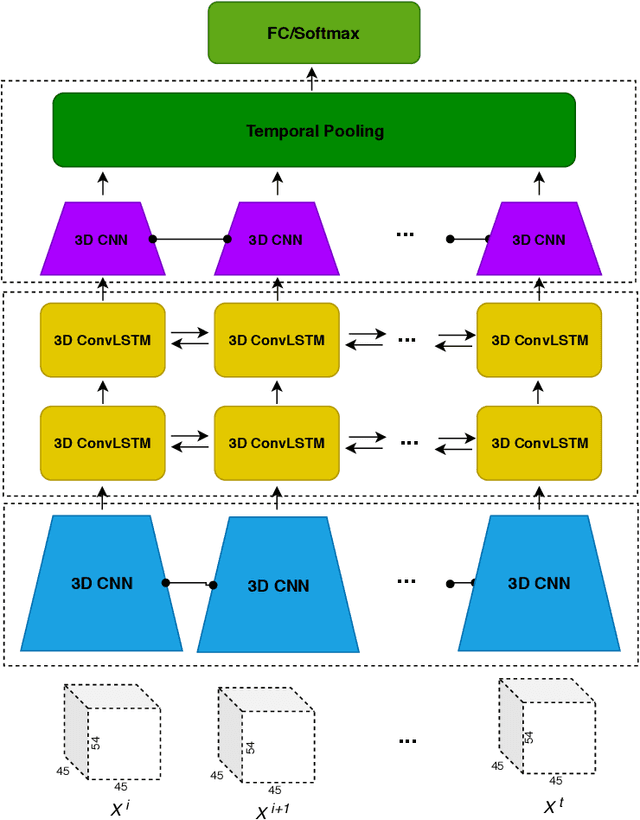
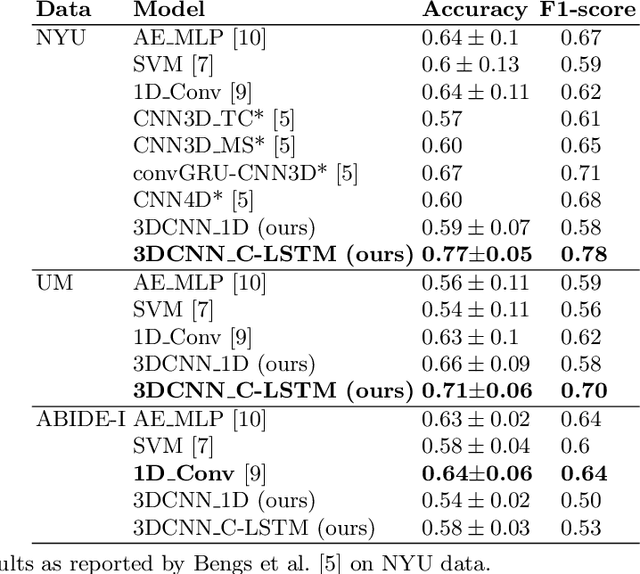
Abstract:Functional Magnetic Resonance Imaging (fMRI) captures the temporal dynamics of neural activity as a function of spatial location in the brain. Thus, fMRI scans are represented as 4-Dimensional (3-space + 1-time) tensors. And it is widely believed that the spatio-temporal patterns in fMRI manifests as behaviour and clinical symptoms. Because of the high dimensionality ($\sim$ 1 Million) of fMRI, and the added constraints of limited cardinality of data sets, extracting such patterns are challenging. A standard approach to overcome these hurdles is to reduce the dimensionality of the data by either summarizing activation over time or space at the expense of possible loss of useful information. Here, we introduce an end-to-end algorithm capable of extracting spatiotemporal features from the full 4-D data using 3-D CNNs and 3-D Convolutional LSTMs. We evaluate our proposed model on the publicly available ABIDE dataset to demonstrate the capability of our model to classify Autism Spectrum Disorder (ASD) from resting-state fMRI data. Our results show that the proposed model achieves state of the art results on single sites with F1-scores of 0.78 and 0.7 on NYU and UM sites, respectively.
* 8pages
Simple 1-D Convolutional Networks for Resting-State fMRI Based Classification in Autism
Jul 02, 2019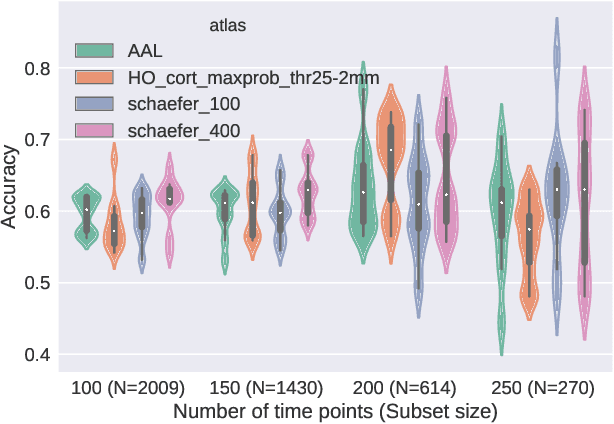
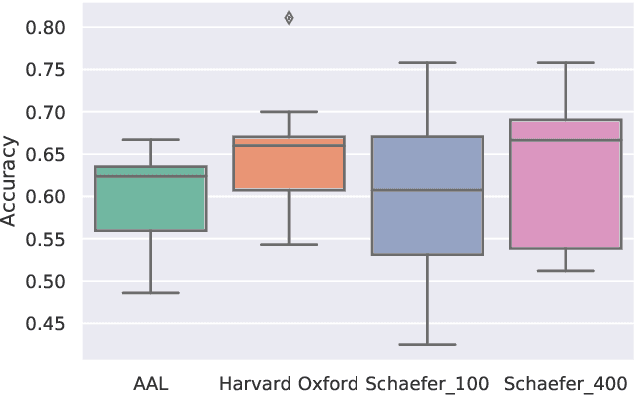
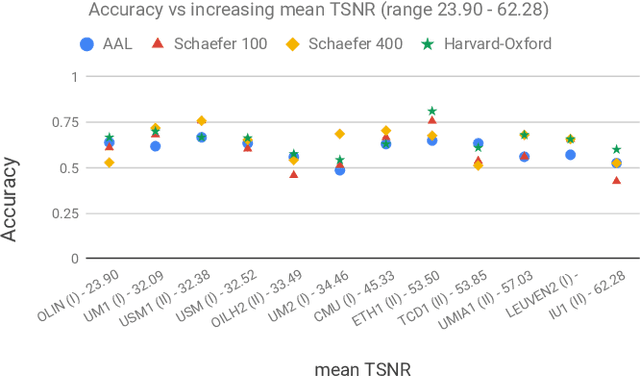
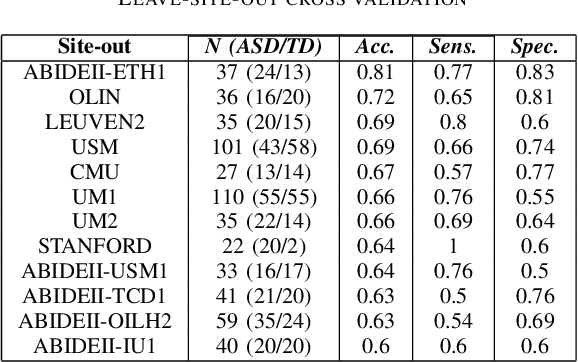
Abstract:Deep learning methods are increasingly being used with neuroimaging data like structural and function magnetic resonance imaging (MRI) to predict the diagnosis of neuropsychiatric and neurological disorders. For psychiatric disorders in particular, it is believed that one of the most promising modality is the resting-state functional MRI (rsfMRI), which captures the intrinsic connectivity between regions in the brain. Because rsfMRI data points are inherently high-dimensional (~1M), it is impossible to process the entire input in its raw form. In this paper, we propose a very simple transformation of the rsfMRI images that captures all of the temporal dynamics of the signal but sub-samples its spatial extent. As a result, we use a very simple 1-D convolutional network which is fast to train, requires minimal preprocessing and performs at par with the state-of-the-art on the classification of Autism spectrum disorders.
 Add to Chrome
Add to Chrome Add to Firefox
Add to Firefox Add to Edge
Add to Edge